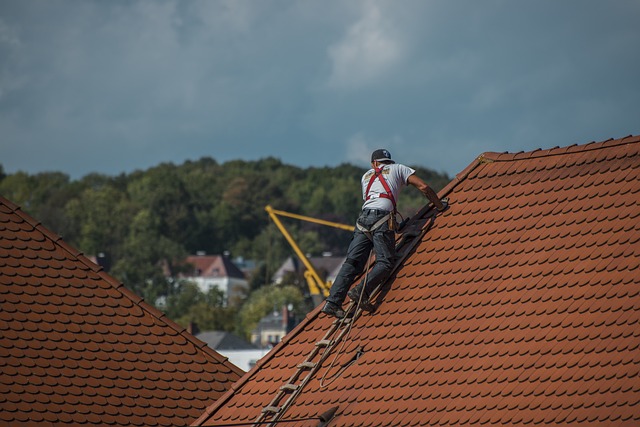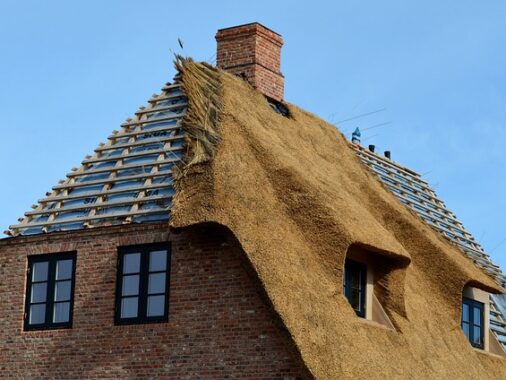Your roof is one of the most critical components of your home’s structure, safeguarding it against the elements and providing essential insulation and protection. Regular roof maintenance is vital in ensuring that your roof remains durable and functional for many years. Ignoring this important task can lead to significant damage, costly repairs, and even premature roof replacement. In this comprehensive guide, we will discuss why roof maintenance is important, the key aspects to focus on, and the tips that will help extend the life of your roof.
Why Regular Roof Maintenance is Crucial
Roof maintenance is often an overlooked aspect of home care, but it plays a crucial role in preventing future damage and saving homeowners from unexpected expenses. Over time, roofs are subjected to harsh conditions, including extreme weather, debris, and biological growth like moss and algae. Without regular inspections and upkeep, minor issues can escalate into major problems that compromise the structural integrity of your home.
Regular maintenance helps to:
- Prevent leaks and water damage
- Extend the life of your roof
- Improve energy efficiency by ensuring proper insulation
- Maintain the overall aesthetic appeal of your home
- Increase property value
Signs That Your Roof Needs Maintenance
Understanding the signs that your roof requires maintenance can prevent extensive damage. Below are some of the most common indicators that your roof is in need of attention:
- Missing or broken shingles: If you notice shingles that are cracked, curled, or missing altogether, it’s a sign of wear and tear.
- Water stains on your ceiling: This could indicate a leak in your roof that needs immediate attention.
- Granules in the gutters: Shingle granules help protect your roof from the sun’s rays. If you find these in your gutters, it’s a sign that your shingles are deteriorating.
- Sagging rooflines: A sagging roof could indicate structural problems, such as rotting beams or a weakened foundation.
- Moss or algae growth: While this might not seem like an urgent issue, moss and algae can trap moisture, leading to the slow deterioration of roofing materials.
Tips for Prolonging Roof Longevity
Ensuring that your roof stays in prime condition requires a proactive approach. Here are some key tips for increasing the longevity and durability of your roof:
1. Conduct Regular Inspections
One of the most important steps in roof maintenance is conducting bi-annual inspections. Ideally, these should be done in the spring and fall, after the harsher seasons of winter and summer. During inspections, look for visible signs of damage like missing shingles, cracks, or debris buildup.
2. Keep Gutters Clean
Clogged gutters are a major cause of roof damage as they can lead to water overflow, which damages shingles and causes leaks. Regularly cleaning out leaves, twigs, and other debris from your gutters will ensure proper drainage and prevent unnecessary strain on your roof.
3. Trim Overhanging Trees
Branches that hang over your roof can cause multiple problems. During storms, they may fall and cause physical damage to your roof. Even when intact, they drop debris like leaves, which can collect moisture and lead to rot. Trimming back trees will help to avoid these issues and extend the life of your roof.
4. Address Minor Issues Immediately
Small problems can quickly turn into large repairs if left unchecked. If you notice any missing shingles, cracked tiles, or signs of leaks, address them as soon as possible. Prompt repairs are much cheaper and more effective than waiting until significant damage has occurred.
5. Ensure Proper Ventilation
Proper roof ventilation is essential for maintaining the longevity of your roof. Poor ventilation can cause excessive heat buildup, which weakens shingles, causes blistering, and accelerates wear. Ensure your attic is well-ventilated to allow for air circulation, which helps regulate temperature and moisture levels.
6. Remove Snow and Ice
In colder climates, the buildup of snow and ice can lead to a phenomenon known as ice dams. These occur when snow melts and refreezes near the eaves of your roof, preventing proper drainage. Ice dams can cause significant damage to your roof, leading to leaks and structural issues. Use a roof rake to carefully remove snow or hire professionals to do this if necessary.
The Role of Professional Roof Maintenance
While homeowners can handle many aspects of roof care themselves, there are times when professional assistance is needed. Hiring a qualified roofing contractor ensures that more complicated maintenance tasks, such as replacing damaged shingles, inspecting for structural damage, or installing new flashing, are handled correctly.
How Often Should You Schedule Professional Inspections?
We recommend scheduling professional roof inspections at least once every three years for newer roofs and annually for older ones. During these inspections, a professional roofer will thoroughly check for any signs of damage that may not be visible to the untrained eye, ensuring any potential issues are addressed before they become costly repairs.
Common Mistakes to Avoid in Roof Maintenance
To ensure your roof lasts as long as possible, avoid these common roof maintenance mistakes:
- Neglecting inspections: Skipping roof inspections, whether personal or professional, can lead to serious damage that could have been prevented.
- DIY repairs without knowledge: While small fixes may seem doable, incorrect repairs can cause further damage, potentially voiding any warranties on roofing materials.
- Allowing debris to accumulate: Accumulated debris can cause moisture buildup, leading to rot and roof deterioration.
- Ignoring ventilation issues: Improper ventilation is often overlooked, but it can cause heat damage in the summer and ice buildup in the winter, shortening your roof’s lifespan.
How Proper Maintenance Improves Roof Durability
Maintaining your roof does more than just prevent leaks or save money on repairs. Proper maintenance helps in enhancing the overall durability of your roof. A well-maintained roof can withstand severe weather conditions better, improve the insulation of your home, and protect it from mold, mildew, and pests. These benefits contribute not only to the longevity of the roof but also to the comfort and energy efficiency of your home.
Conclusion
Regular roof maintenance is crucial for protecting your home, extending the life of your roof, and avoiding costly repairs. By staying proactive, conducting regular inspections, and addressing minor issues immediately, you can ensure your roof remains durable for years to come. Remember, professional help is invaluable for more complex tasks, and it’s always better to stay ahead of potential problems.



